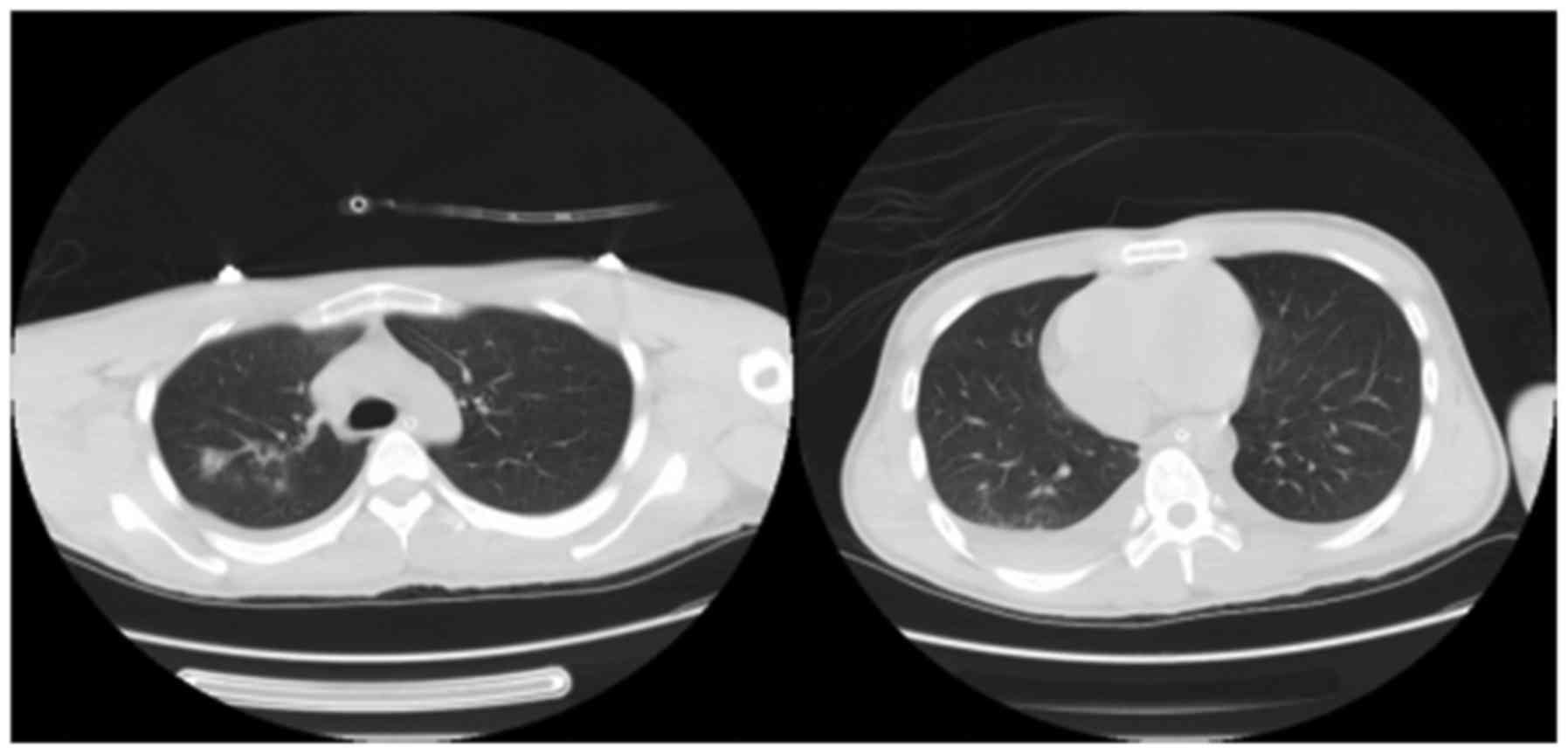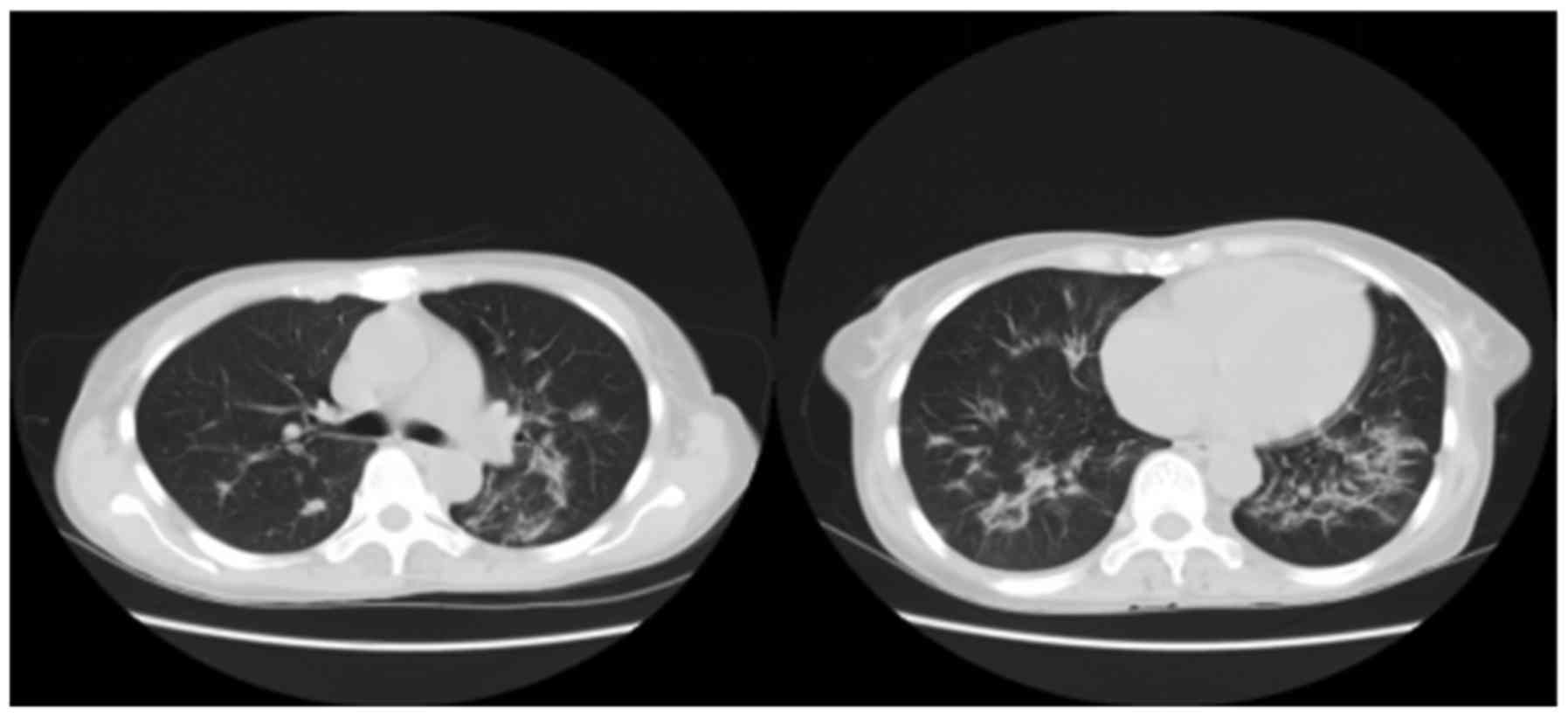|
1
|
Cochemé HM and Murphy MP: Complex I is the
major site of mitochondrial superoxide production by paraquat. J
Biol Chem. 283:1786–1798. 2008. View Article : Google Scholar : PubMed/NCBI
|
|
2
|
Castello PR, Drechsel DA and Patel M:
Mitochondria are a major source of paraquat-induced reactive oxygen
species production in the brain. J Biol Chem. 282:14186–14193.
2007. View Article : Google Scholar : PubMed/NCBI
|
|
3
|
Dinis-Oliveira RJ, Duarte JA,
Sánchez-Navarro A, Remião F, Bastos ML and Carvalho F: Paraquat
poisonings: Mechanisms of lung toxicity, clinical features, and
treatment. Crit Rev Toxicol. 38:13–71. 2008. View Article : Google Scholar : PubMed/NCBI
|
|
4
|
Weng CH, Chen HH, Hu CC, Huang WH, Hsu CW,
Fu JF, Lin WR, Wang IK and Yen TH: Predictors of acute kidney
injury after paraquat intoxication. Oncotarget. 8:51345–51354.
2017. View Article : Google Scholar : PubMed/NCBI
|
|
5
|
Gil HW, Hong JR, Jang SH and Hong SY:
Diagnostic and therapeutic approach for acute paraquat
intoxication. J Korean Med Sci. 29:1441–1449. 2014. View Article : Google Scholar : PubMed/NCBI
|
|
6
|
Gawarammana IB and Buckley NA: Medical
management of paraquat ingestion. Br J Clin Pharmacol. 72:745–757.
2011. View Article : Google Scholar : PubMed/NCBI
|
|
7
|
Hsu CW, Lin JL, Lin-Tan DT, Chen KH, Yen
TH, Wu MS and Lin SC: Early hemoperfusion may improve survival of
severely paraquat-poisoned patients. PLoS One. 7:e483972012.
View Article : Google Scholar : PubMed/NCBI
|
|
8
|
Bonilla E, Medina-Leendertz S, Villalobos
V, Molero L and Bohórquez A: Paraquat-induced oxidative stress in
drosophila melanogaster Effects of melatonin, glutathione,
serotonin, minocycline, lipoic acid and ascorbic acid. Neurochem
Res. 31:1425–1432. 2006. View Article : Google Scholar : PubMed/NCBI
|
|
9
|
Cappelletti G, Maggioni MG and Maci R:
Apoptosis in human lung epithelial cells: Triggering by paraquat
and modulation by antioxidants. Cell Biol Int. 22:671–678. 1998.
View Article : Google Scholar : PubMed/NCBI
|
|
10
|
Moon JM and Chun BJ: The efficacy of high
doses of vitamin C in patients with paraquat poisoning. Hum Exp
Toxicol. 30:844–850. 2011. View Article : Google Scholar : PubMed/NCBI
|
|
11
|
Hong SY, Hwang KY, Lee EY, Eun SW, Cho SR,
Han CS, Park YH and Chang SK: Effect of vitamin C on plasma total
antioxidant status in patients with paraquat intoxication. Toxicol
Lett. 126:51–59. 2002. View Article : Google Scholar : PubMed/NCBI
|
|
12
|
Hong SY, Yang JO, Lee EY and Lee ZW:
Effects of N-acetyl-L-cysteine and glutathione on antioxidant
status of human serum and 3T3 fibroblasts. J Korean Med Sci.
18:649–654. 2003. View Article : Google Scholar : PubMed/NCBI
|
|
13
|
Hong SY, Gil HW, Yang JO, Lee EY, Kim HK,
Kim SH, Chung YH, Hwang SK and Lee ZW: Pharmacokinetics of
glutathione and its metabolites in normal subjects. J Korean Med
Sci. 20:721–726. 2005. View Article : Google Scholar : PubMed/NCBI
|
|
14
|
Jang YJ, Won JH, Back MJ, Fu Z, Jang JM,
Ha HC, Hong S, Chang M and Kim DK: Paraquat induces apoptosis
through a mitochondria-dependent pathway in RAW264.7 cells. Biomol
Ther (Seoul). 23:407–413. 2015. View Article : Google Scholar : PubMed/NCBI
|
|
15
|
Musatov A and Robinson NC: Susceptibility
of mitochondrial electron-transport complexes to oxidative damage.
Focus on cytochrome c oxidase. Free Radic Res. 46:1313–1326.
2012. View Article : Google Scholar : PubMed/NCBI
|
|
16
|
Indo HP, Davidson M, Yen HC, Suenaga S,
Tomita K, Nishii T, Higuchi M, Koga Y, Ozawa T and Majima HJ:
Evidence of ROS generation by mitochondria in cells with impaired
electron transport chain and mitochondrial DNA damage.
Mitochondrion. 7:106–118. 2007. View Article : Google Scholar : PubMed/NCBI
|
|
17
|
Ortiz MS, Forti KM, Suárez Martinez EB,
Muñoz LG, Husain K and Muñiz WH: Effects of antioxidant
N-acetylcysteine against paraquat-induced oxidative stress
in vital tissues of mice. Int J Sci Basic Appl Res. 26:26–46.
2016.PubMed/NCBI
|
|
18
|
Płoszaj T, Robaszkiewicz A and Witas H:
Oxidative damage of mitochondrial DNA: The result or consequence of
enhanced generation of reactive oxygen species. Postepy Biochem.
56:139–146. 2010.(In Polish). PubMed/NCBI
|
|
19
|
Bacsi A, Chodaczek G, Hazra TK, Konkel D
and Boldogh I: Increased ROS generation in subsets of OGG1 knockout
fibroblast cells. Mech Ageing Dev. 128:637–649. 2007. View Article : Google Scholar : PubMed/NCBI
|
|
20
|
Liu RM and Gaston Pravia KA: Oxidative
stress and glutathione in TGF-beta-mediated fibrogenesis. Free
Radic Biol Med. 48:1–15. 2010. View Article : Google Scholar : PubMed/NCBI
|
|
21
|
Cheresh P, Kim SJ, Tulasiram S and Kamp
DW: Oxidative stress and pulmonary fibrosis. Biochim Biophys Acta.
1832:1028–1040. 2013. View Article : Google Scholar : PubMed/NCBI
|
|
22
|
Mittal M, Siddiqui MR, Tran K, Reddy SP
and Malik AB: Reactive oxygen species in inflammation and tissue
injury. Antioxid Redox Signal. 20:1126–1167. 2014. View Article : Google Scholar : PubMed/NCBI
|
|
23
|
Mariappan N, Elks CM, Fink B and Francis
J: TNF-induced mitochondrial damage: A link between mitochondrial
complex I activity and left ventricular dysfunction. Free Radic
Biol Med. 46:462–470. 2009. View Article : Google Scholar : PubMed/NCBI
|
|
24
|
Awadalla EA: Efficacy of vitamin C against
liver and kidney damage induced by paraquat toxicity. Exp Toxicol
Pathol. 64:431–434. 2012. View Article : Google Scholar : PubMed/NCBI
|
|
25
|
Boer LA, Panatto JP, Fagundes DA, Bassani
C, Jeremias IC, Daufenbach JF, Rezin GT, Constantino L, Dal-Pizzol
F and Streck EL: Inhibition of mitochondrial respiratory chain in
the brain of rats after hepatic failure induced by carbon
tetrachloride is reversed by antioxidants. Brain Res Bull.
80:75–78. 2009. View Article : Google Scholar : PubMed/NCBI
|
|
26
|
Kamata H, Honda S, Maeda S, Chang L,
Hirata H and Karin M: Reactive oxygen species promote
TNFalpha-induced death and sustained JNK activation by inhibiting
MAP kinase phosphatases. Cell. 120:649–661. 2005. View Article : Google Scholar : PubMed/NCBI
|
|
27
|
He F, Xu P, Zhang J, Zhang Q, Gu S, Liu Y
and Wang J: Efficacy and safety of pulse immunosuppressive therapy
with glucocorticoid and cyclophosphamide in patients with paraquat
poisoning: A meta-analysis. Int Immunopharmacol. 27:1–7. 2015.
View Article : Google Scholar : PubMed/NCBI
|
|
28
|
Kim JH, Gil HW, Yang JO, Lee EY and Hong
SY: Effect of glutathione administration on serum levels of
reactive oxygen metabolites in patients with paraquat intoxication:
A pilot study. Korean J Intern Med (Korean Assoc Intern Med).
25:282–287. 2010.
|
|
29
|
Kim SJ, Cheresh P, Jablonski RP, Williams
DB and Kamp DW: The role of mitochondrial DNA in mediating alveolar
epithelial cell apoptosis and pulmonary fibrosis. Int J Mol Sci.
16:21486–21519. 2015. View Article : Google Scholar : PubMed/NCBI
|
|
30
|
Yu WC, Tian LY and Cheng W: Efficacy study
of edaravone and acetylcysteine towards bleomycin-induced rat
pulmonary fibrosis. Int J Clin Exp Med. 8:8730–8739.
2015.PubMed/NCBI
|
















